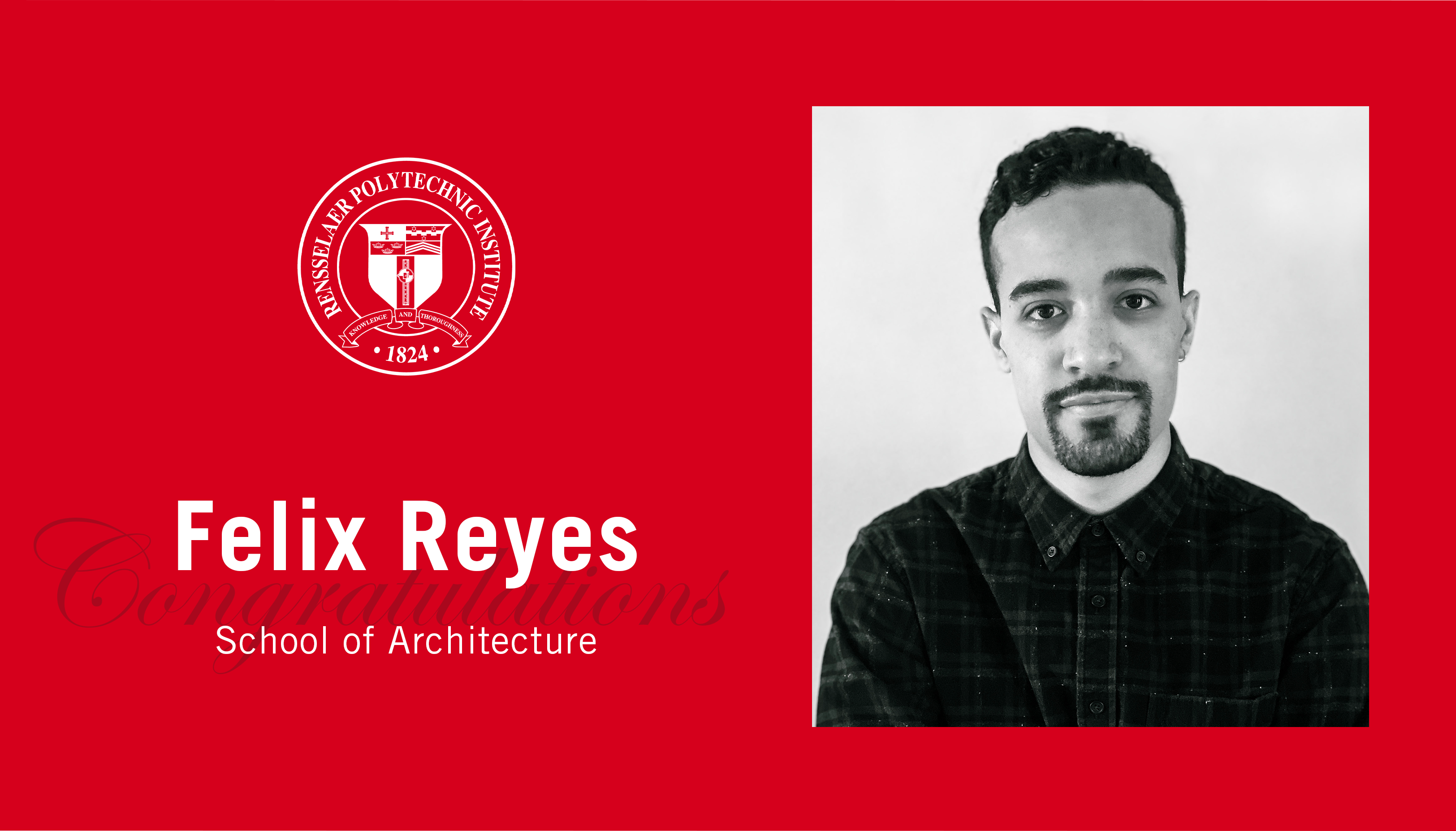“With every architecture project, there’s a story behind it,” said Felix Reyes.
And what he loves most about studying architecture is that there are so many stories — and the work is so interdisciplinary. “You can’t stay isolated in a bubble,” he said. “You have to call out to all of these different fields and practices to inform your design, so you’re always learning something new. You’re never bored.”
Reyes, who grew up in Miami, has been actively gathering perspectives throughout his time at Rensselaer Polytechnic Institute, and will undoubtedly continue to do so after he graduates with his Bachelor of Architecture degree in May. After bidding farewell to the Rensselaer campus in Troy, New York, he is bound for the Southern California Institute of Architecture in Los Angeles to pursue his master’s degree.
While at Rensselaer, he was never content to remain in a bubble. For example, he participated in the Latin America study abroad program offered by the School of Architecture. “For me, that was super invigorating in terms of exposing me to completely different ways of thinking about architecture,” he said.
In addition to venturing into other communities, he also worked to ensure that important external voices made their way into his own. For example, he helped to coordinate a guest lecture by Chris Cornelius, a citizen of the Oneida Nation of Wisconsin and the founding principal of studio:indigenous, a design and consulting practice serving American Indian clients.
“The big thing that stands out to me,” Reyes said of his Rensselaer experience, “is just the scope of what we’re introduced to. There is a very interdisciplinary approach to how we learn. We’re getting informed by all these different things: sustainability, history and theory, construction systems, and there is a huge emphasis on design studios.”
The studio culture is one thing he particularly missed when the COVID-19 pandemic altered the course of his final semesters at Rensselaer. However, even in the midst of a pandemic, he recognized opportunity. The shift toward electronic communication enabled more international guests — architects from China and Germany, for example — to participate in their juries and provide feedback on their work.
The international view, he said, “opens up a conversation and makes you consider things that you weren’t considering before.”
The pandemic also significantly influenced his thesis, which focused on architecture in digital environments, adding yet a new realm to explore.
“Does architecture need to be a building in the physical sense, or can it be a space that is used to connect people now that we have these virtual platforms? How can we do things that wouldn’t necessarily be possible in a physical sense?” he wondered. “Maybe we can consider other ways of thinking about architecture that allows us to be connected, even when we are physically isolated from each other.”
Ultimately, Reyes, who is also an artist, plans to teach and to start his own architecture practice, where he plans to continue working in virtually immersive environments.

